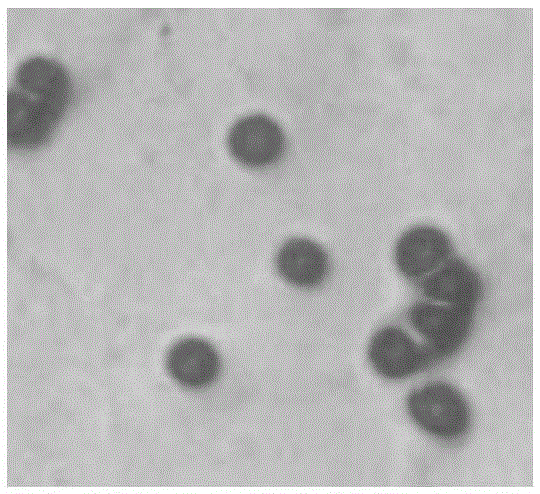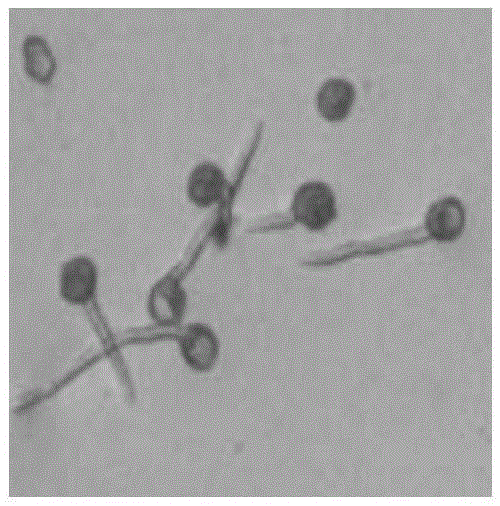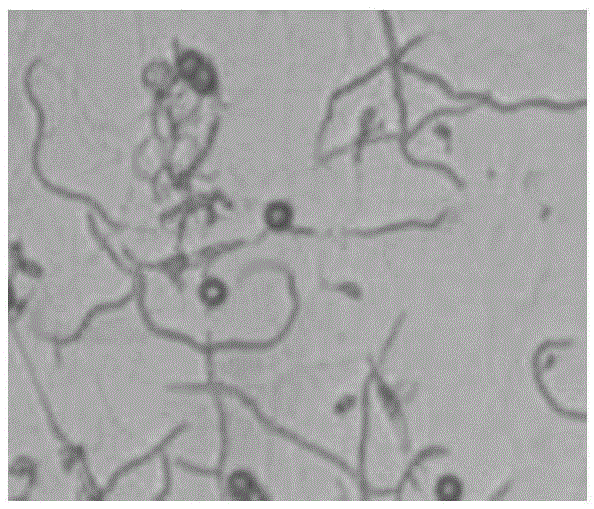Method for infecting wheat by inoculating tilletia foetida to roots
A technology of Tilletia clematis and wheat, which is applied in the field of root inoculation of Tilletia clematis to infect wheat, and achieves the effect of simple method, easy implementation and operation, and is conducive to popularization and application
- Summary
- Abstract
- Description
- Claims
- Application Information
AI Technical Summary
Problems solved by technology
Method used
Image
Examples
Embodiment 1
[0042] Embodiment 1, adopt method for the present invention to artificially inoculate wheat Tilletia glabra
[0043] Specific steps:
[0044] (1) prepare Tilletia tritici teliospore suspension:
[0045] Put the galls into a centrifuge tube, add distilled water to soak for half an hour, then clip the seed coat, filter through a 150-mesh gauze, and centrifugally shake, pour out the water and then add water to cultivate at room temperature for 24 hours; pour out the water the next day, After adding 0.25% NaCLO for 1 min, pour it out, add sterile water and centrifuge and wash it repeatedly 2 to 3 times to obtain a teliospore suspension; figure 1 shown.
[0046] (2) Cultivate the mycelia of Tilletia tritici: the concentration is 1×10 5 Spray the teliospore suspension of Tilletia tritici per ml on 2% water agar medium, add 0.1-0.5ml of the suspension to each 9cm-diameter petri dish, culture at 16°C, and confirm by observation until the growth of the first bacteria Silk, when the...
Embodiment 2
[0054] The infection situation verification and infection rate statistics of the wheat seeds that embodiment 2, the inventive method obtains
[0055] (1) Verification of infestation:
[0056] The root tissues of the vernalized seedlings obtained in Example 1 were taken to detect whether the wheat was infected. Using the CTAB method to extract the DNA of wheat roots, the DNA after extraction was subjected to PCR reaction with the specific primers SC1:ACAAGTTGGAGTCAGGAG; SC2:ATCGTATGGTTTCGTCTT of Tilletiafoetida after the extraction, and the reaction product was detected by agarose gel electrophoresis, and it was found that Specific bands, such as Figure 5 shown.
[0057] At the same time, the wheat root tissue was cut into small pieces and fixed in absolute ethanol. The sample was stained with 10 μg / mL Propidiumidodide (0.5 mL), 0.02% Tween20 (0.5 mL) for 10 min, and then 20 μg / mL WGA-AF488 (0.5 mL) After staining for 10 min, wash with 10×PBS (pH7.4, 1 mL) 3 to 5 times. WG...
PUM
 Login to View More
Login to View More Abstract
Description
Claims
Application Information
 Login to View More
Login to View More - R&D Engineer
- R&D Manager
- IP Professional
- Industry Leading Data Capabilities
- Powerful AI technology
- Patent DNA Extraction
Browse by: Latest US Patents, China's latest patents, Technical Efficacy Thesaurus, Application Domain, Technology Topic, Popular Technical Reports.
© 2024 PatSnap. All rights reserved.Legal|Privacy policy|Modern Slavery Act Transparency Statement|Sitemap|About US| Contact US: help@patsnap.com










